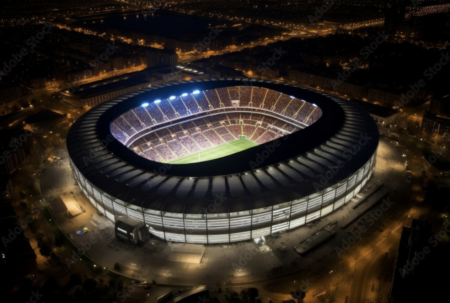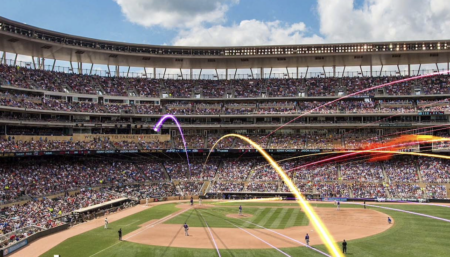As venue operators continue to introduce disruptive technology into arena design, Stadia visited the AspireTech conference at Stamford Bridge in London, UK – hosted by the Aspire Foundation – where industry experts outlined their vision for the future.
Where once stadia had the basic purpose of keeping the rain off the spectators’ heads, arena design is becoming more and more complex. Companies are now having to future-proof their investments. “Stadia now have to reinvent themselves more than they have ever had to in the past,” says Dina Tamimi, director of smart cities at Honeywell. For Tamimi, stadia design has to keep pace with evolving guest demands: “Now with fan expectations, we’re constantly having to upgrade what the stadium can provide, we have to stay on top of providing the kind of experience that people keep with them.”
As with recent builds – such as Mercedes-Benz Stadium in Atlanta, Georgia, USA – there is increasing focus on connectivity within the ground. Designers are thinking about 2020 and beyond. “We designed high-density wi-fi in stadia before the iPhone,” says Kenneth Martin, executive director, global digital transformation group – sports and entertainment/consumer industries, Cisco. “We can predict these trends. From a business point of view, we want fans to connect to the wi-fi so that we can find out more about them. The biggest challenge is understanding the guest so that we can provide an experience.”
It is the increased connectivity which will provide a platform for the next step in stadia technology. “In the sports arena, there are more and more augmented reality opportunities,” says Daniel Mehaffey, business architect at Microsoft Digital. “It’s a non-intrusive technology, you get the choice to opt in. It’s something we’ve developed at the Bernabeu [Santiago Bernabéu Stadium, home stadium of Real Madrid soccer club in Spain], by using AR you can find your friends, the toilets, the food stations.”
With AR technology expected to become a bigger part of stadia developments in the future, companies are looking at how to benefit from the system. “AR is going to enhance the in-stadium experience and allow people to get more from the atmosphere,” explains William Kopp, managing architect, Cisco. “And from a sponsor perspective, it provides a huge opportunity. We can use the data we’ve built up to personalize adverts for the user.”
While AR technology gives us an insight into what will be included into stadia design in the future, Kevin O’Riordan, global engagement lead at IBM, believes that AR shouldn’t take away from the event. “Technology isn’t the be all and end all, but it’s good if you can add the technology that enhances the experience, such as replays on a spectator’s phone.” This is something that Microsoft have begun to implement at the Bernabeu. “We have six different cameras which can be viewed on a phone, so there is access to a full pitch-side view.”
While increased technology is being used to improve the spectator experience, the data collection is also being used to develop security following recent scares. “User technology can facilitate safety, [and] operations,” says Francesco Norante, head of strategic marketing at Leonardo Security. “We monitor social media and other outlets and match information with our blacklist, so we know who isn’t allowed into the stadium. It’s a two-way communication with the police and stadium management.”
As stadia connectivity improves, the ability to secure the ground will become easier. “We can use the intelligence to assess what is happening in front of the cameras,” says Tamimi. “Now one person can watch up to 300 cameras at once, the security systems are all linked and the operator can be notified of any anomalies. We can look after a stadium as if it was a small city.”
While user data is the first point of security, drone technology is being explored to improve in-stadium security. “We’ve had requests from Premier League teams to use drones, it is something that is coming,” explains Norante. “We see it as something that is not just beneficial to spectator safety, it can be utilized to enhance the fan experience.”
With the relentless development of stadia, designers now have to produce a project which can stand the test of time. But, increased connectivity means that companies gave the opportunity to innovate in the future.
October 11, 2017




